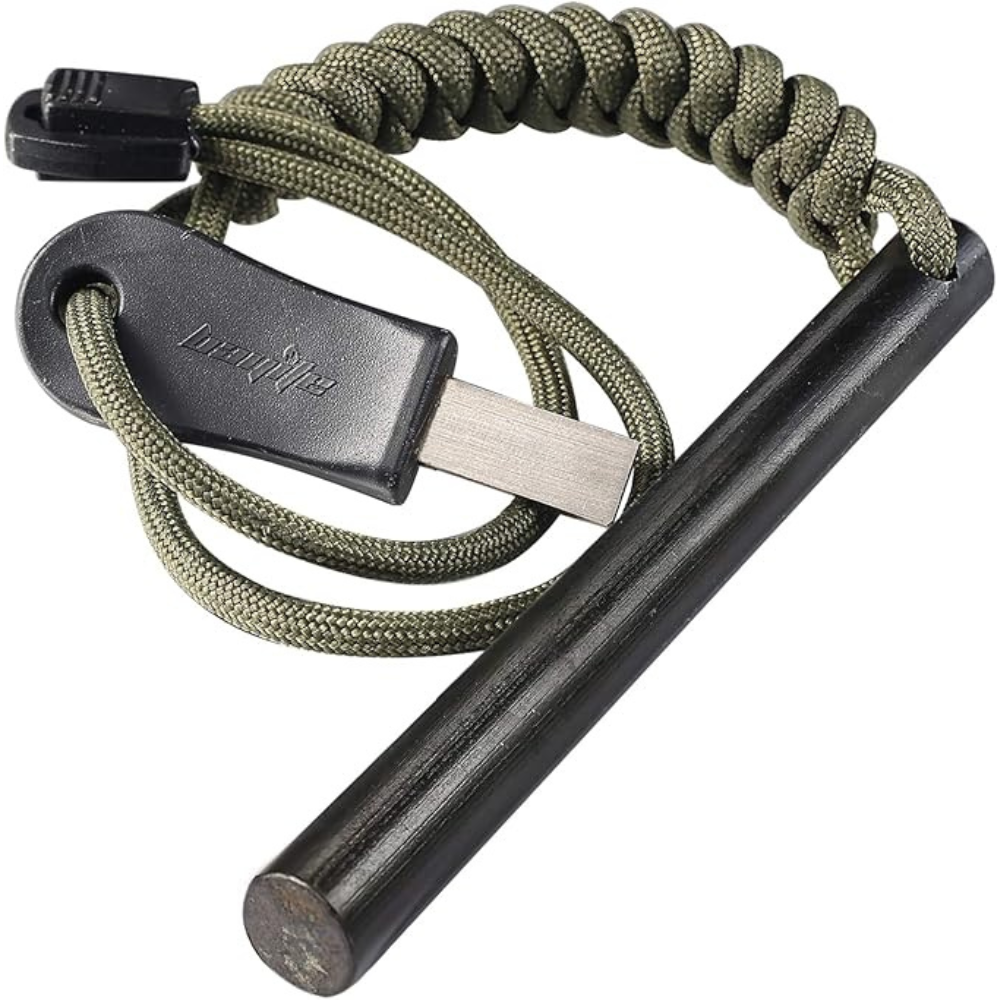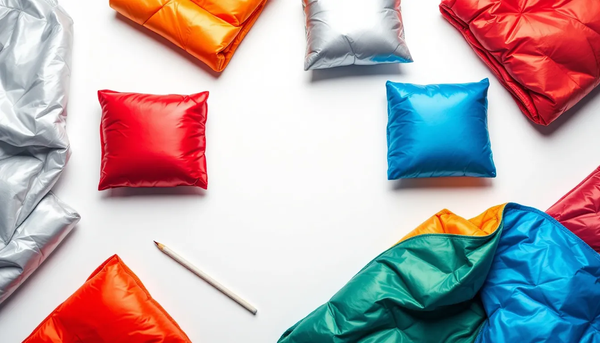Key Takeaways:
- Understanding Fire Starters: Learn about different types of fire starters and their unique features.
- Practical Tips: Discover how to effectively use fire starters in various weather conditions.
- Choosing the Right Tool: Find out what to consider when selecting a fire starter for your needs.
Introduction to Survival Fire Starters
When you’re out in the wild, the ability to start a fire can be the difference between comfort and calamity. A survival fire starter is an essential tool for any outdoor enthusiast, providing a reliable way to create sparks and light tinder even in challenging conditions. Whether you’re camping, hiking, or in a survival situation, knowing how to start a fire is crucial.
Fire starters come in various forms, each with its own set of features and benefits. From magnesium rods to ferrocerium rods, fire steel, and fire piston, these tools are designed to help you ignite a fire quickly and efficiently. Using easily ignitable materials, such as a cotton ball, can enhance the effectiveness of your fire starter. Additionally, a ferro rod is a reliable fire starter known for its ability to produce consistent sparks. When choosing a fire starter, it's important to consider weather conditions to ensure optimal performance. In this guide, we’ll explore the different types of fire starters, how to use them, and what to look for when choosing the right one for your needs.
Types of Fire Starters
Magnesium Rods and Ferrocerium Rods
Magnesium rods and ferrocerium rods are popular choices for fire starting. Magnesium rods are known for their ability to produce a hot flame when shaved and ignited, making them ideal for lighting tinder like pine needles or cotton balls. Most ferro rods, on the other hand, create a spark when struck with a striker, igniting tinder with ease.
Ferrocerium rods are particularly favored for their durability and ability to produce sparks even in wet conditions. These rods are often paired with a steel striker, allowing you to create a spark by striking the rod. The sparks generated are hot enough to ignite a variety of tinder materials, making them a reliable choice for starting fires in the wild.
Flint and Steel
Fire steel, also known as flint and steel, is a classic fire starting method that has been used for centuries. This method involves striking a piece of steel against a flint rock to create sparks. While it requires more skill and practice compared to other fire starters, it is a lightweight and compact option that can be easily carried in a pack.
The flint and steel method is particularly useful in windy conditions, as the sparks can be directed towards the tinder. However, it may prove challenging in wet weather, as the flint and steel need to be dry to produce sparks effectively. Despite this, many outdoor enthusiasts appreciate the traditional aspect of this fire starting technique.
How to Use a Survival Fire Starter
Creating Sparks and Lighting Tinder
To start a fire with a survival fire starter, you'll need to create sparks and light tinder. Begin by gathering dry tinder such as dryer lint, char cloth, or small twigs. Arrange the tinder in a small pile on the ground, ensuring it is dry and free from moisture. This will help the tinder catch fire more easily when exposed to sparks.
Next, use your fire starter to create sparks. If you're using a ferrocerium rod, hold the rod in one hand and the striker in the other. Strike the rod with the striker at a 45-degree angle, directing the sparks towards the tinder. With practice, you'll be able to create a spark that ignites the tinder, allowing you to start a fire.
Overcoming Weather Challenges
Weather conditions can significantly impact your ability to start a fire. In rainy or snowy conditions, it can be difficult to find dry tinder. In such cases, it's helpful to carry a small supply of waterproof tinder, such as fatwood or cotton balls soaked in petroleum jelly, in your pack. These materials can ignite even when exposed to moisture.
Wind can also pose a challenge when starting a fire. To overcome this, create a windbreak using rocks or logs to shield your tinder from the wind. This will help the sparks land directly on the tinder, increasing your chances of successfully starting a fire. With the right techniques and tools, you can start a fire even in adverse weather conditions.
Choosing the Right Fire Starter
Factors to Consider
When selecting a fire starter, consider factors such as durability, size, and ease of use. A durable fire starter will withstand the elements and provide reliable performance over time. Look for fire starters made from high-quality materials that can endure repeated use without breaking. A fire piston is a durable and efficient fire starter option.
Size is another important consideration. A compact fire starter is easy to carry and won’t take up much space in your pack. However, ensure that the fire starter is large enough to be used comfortably, especially if you have large hands. Finally, choose a fire starter that is easy to use, even if you’re wearing gloves or have cold hands.
Price and Features
Fire starters come in a range of prices, from budget-friendly options to high-end models. While it's tempting to choose the cheapest option, investing in a quality fire starter can save you from the struggle of starting a fire in difficult conditions. Look for features such as a built-in bottle opener or a lanyard for easy carrying.
Consider the length of the rod or striker, as longer rods can create more sparks and are easier to use. Some fire starters also come with additional tools, such as a knife or a whistle, which can be helpful in survival situations. By weighing the price against the features offered, you can find a fire starter that meets your needs and budget.
Practical Examples and Case Studies
Real-Life Scenarios
Imagine you're on a camping trip in the middle of a forest. The weather is cold, and a fire is essential for warmth and cooking. You reach for your survival fire starter, a trusty ferrocerium rod, and begin striking it with a steel striker. Despite the wind, the sparks land on the tinder, igniting it and allowing you to start a campfire.
In another scenario, you're hiking in the mountains when a sudden rainstorm hits. Your matches are soaked, but you have a magnesium rod in your pack. You shave off some magnesium shavings onto a piece of char cloth and strike the rod with a knife. The shavings ignite, and you quickly build a fire to dry off and warm up.
Lessons Learned
These real-life examples highlight the importance of having a reliable fire starter in your outdoor gear. Whether you're facing wind, rain, or snow, a good fire starter can make all the difference. Practice using your fire starter in various conditions to build confidence and ensure you're prepared for any situation.
By learning from these scenarios, you can better understand the challenges of starting a fire in the wild and how to overcome them. With the right tools and techniques, you can start fires with ease, ensuring your safety and comfort in the great outdoors.
Summary
Survival fire starters are indispensable tools for anyone venturing into the wild. From magnesium rods to ferrocerium rods, these devices offer a reliable way to create sparks and light tinder, even in challenging weather conditions. By understanding the different types of fire starters and how to use them effectively, you can ensure you're prepared for any outdoor adventure.
When choosing a fire starter, consider factors such as durability, size, and features. Investing in a quality fire starter can save you from the frustration of trying to start a fire in adverse conditions. With practice and the right tools, you'll be able to start fires with confidence, ensuring your safety and comfort in the great outdoors.
FAQ
What is the best type of tinder to use with a survival fire starter?
The best tinder is dry and easily ignitable. Common options include dryer lint, char cloth, cotton balls soaked in petroleum jelly, and natural materials like pine needles or small twigs. These materials catch fire quickly when exposed to sparks.
How do I maintain my fire starter to ensure it lasts a long time?
To maintain your fire starter, keep it dry and clean. After use, wipe it down to remove any residue or moisture. Store it in a dry place, and avoid exposing it to extreme temperatures or chemicals that could damage the material.
Can I use a fire starter in wet conditions?
Yes, many fire starters, especially ferrocerium rods, are designed to work in wet conditions. However, it's crucial to have dry tinder available. Consider carrying waterproof tinder or storing tinder in a waterproof container to ensure you can start a fire even when it's wet outside.








Member discussion